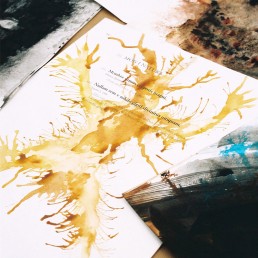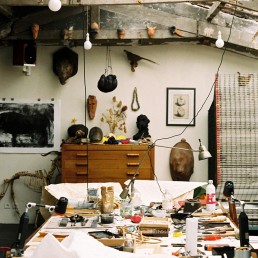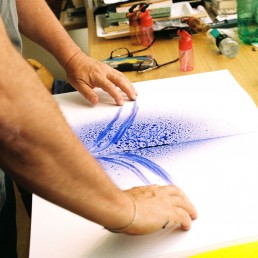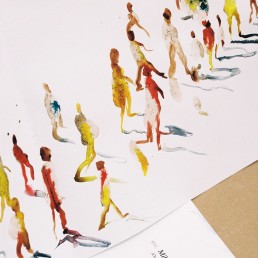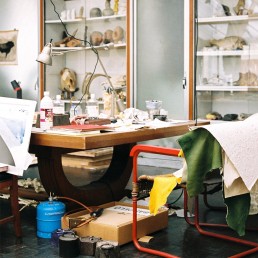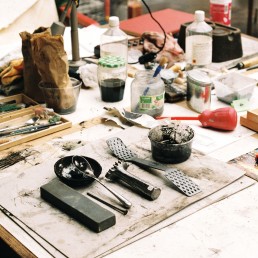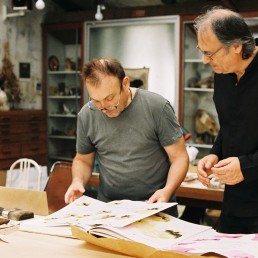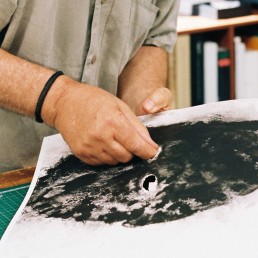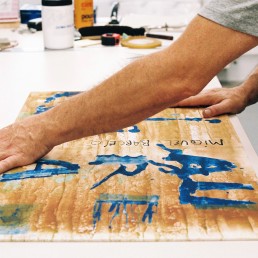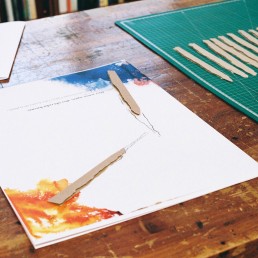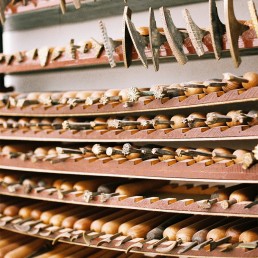Aurea dicta is the outcome of a creative process in which the plastic arts, the thinking of the classics and graphic publishing come together in a dialogue and complement each other to create an outstanding work of art.Discover Miquel Barceló’s most ambitious publishing project.
A literary gem that is more relevant than ever
The history of Aurea dicta dates back to 1922, when a group of eminent Catalan intellectuals embarked on a publishing venture of unprecedented magnitude for the time: the Bernat Metge Collection.
The group’s aim was to translate the Greek and Latin classics into modern Catalan for the first time and to publish them in scholarly editions that were pleasing and bilingual in order to democratise and elevate the ancient heritage.
Aurea dicta (Words of Gold) is one of the most remarkable volumes in the collection.
It consists of an anthology of the knowledge of the ancient world in 2,639 aphorisms that the group compiled and translated over a period of decades.
The first edition saw the light of day in 1960. Signed using the pseudonym Jordi Lombard, it is out of print and no longer available, and is now one of the most sought-after and prized volumes in the Bernat Metge Collection.
These ancient texts remain topical to this day, providing us with an opportunity to explore the origin of our thinking and inviting us to reflect on the current and future challenges our culture faces.
Barceló’s journey to the origin of modern thinking
Interested like few others in the ancient civilisations of Europe, Asia and Africa, Miquel Barceló has closely studied the 2,639 aphorisms in the original Aurea dicta and has personally selected 562 of them, which are presented in groups based on themes such as love, nature, time, the godhead, humankind and spirit… universal concepts of classical thinking that are more relevant in the 21st century than ever.
The challenge of painting on a book-cum-canvas
Art, the word and the book coexist in Aurea dicta as an object.
In order to conceive this fusion of languages, the artist worked on the 562 selected texts arranged on the pages of what would be the original work.
After more than 500 preparatory sketches, Miquel Barceló artistically interpreted the work on this unusual canvas, engaging in a dialogue with the written word and painting directly on it, page by page.
More than a year of working jointly with the most prestigious craftsmen
Miquel Barceló has designed the entire work, personally choosing the format and each of its elements, from the type of binding to the paper, the fabric and the wood of the case.
He spent 15 months hard at work in his studio in Paris, collaborating with some of the most renowned graphic specialists.
Producing a work of this complexity demanded a combination of state-of-the-art technology and the skills of expert craftsmen.
With the support of Institut Català de les Indústries Culturals


